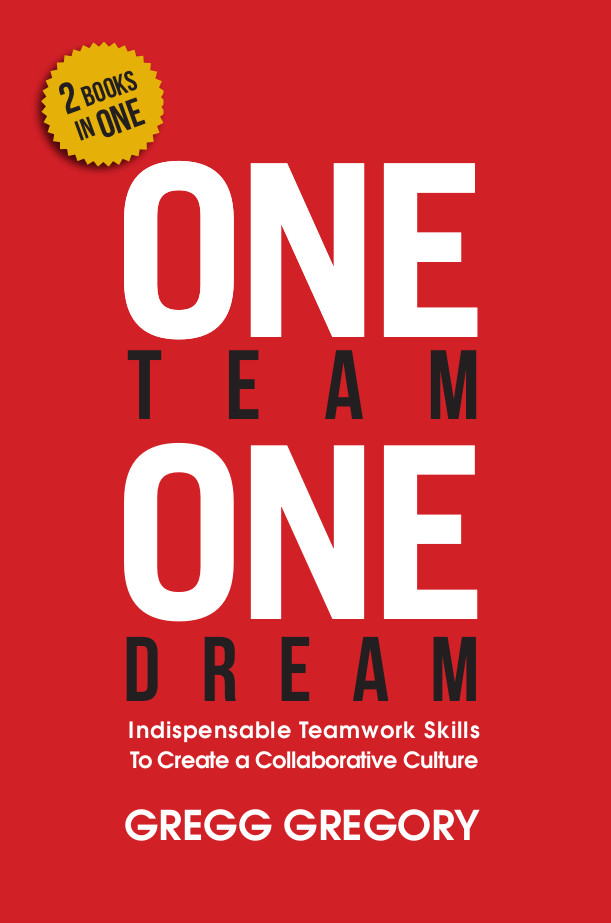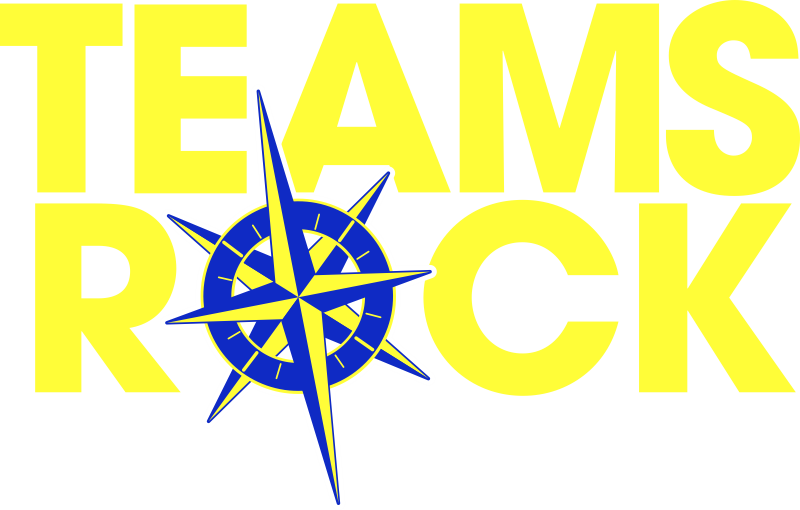Having effective conflict around ideas is a very healthy way to grow, both individually and as a team. Have you ever been on a team where you were in a project meeting and nobody challenged or disagreed with anybody? What happens when that meeting is over and everyone goes back to their desks? Gossip and personal attacks behind everyone’s back.
Imagine a simple straight line as a continuum. On the far left is the extreme representing personal attacks, and on the far right is the extreme with no conflict. The middle of the continuum represents the halfway point between these two extremes.
When there are no challenges among team members, the team is on the far right of the continuum and there is absolutely no conflict. If, in a staff meeting, insults are flying and arguments are occurring, this represents the far left of the continuum. We know that personal attacks do not work either. So where is the best place to be? No conflict or war zone?
 When I was 16 and taking my driver’s license test, for some reason, there was one question I will never forget. “When a vehicle is traveling on a two-way street and making a left hand turn onto a two-way street, where should the vehicle be placed?” There were four answers and, while I do not remember the incorrect answers, I do remember the correct one: “To the right of and as close to the center line as possible.”
When I was 16 and taking my driver’s license test, for some reason, there was one question I will never forget. “When a vehicle is traveling on a two-way street and making a left hand turn onto a two-way street, where should the vehicle be placed?” There were four answers and, while I do not remember the incorrect answers, I do remember the correct one: “To the right of and as close to the center line as possible.”
Guess where conflict needs to be on your team? To the right of and as close to the center of the continuum as possible. You should avoid crossing that middle line into personal attack territory, while still getting your point across. Having conflict around ideas is what we should strive for, and crossing that line is where team damage is done and trust begins eroding.
It is important to understand how conflict works as well as how to handle the stages of conflict to create the best possible outcome for everyone. Effective teamwork requires that personal conflicts be avoided through clear communication, respect, and reflective listening. Understanding the three stages of conflict is critical to successfully working through conflict.
Effective Teamwork Requires that We
Understand the Three Stages of Conflict
Stage 1
During this stage, team members probably won’t give enough information for you to truly determine their level of frustration. They will typically roll with the punches and reluctantly agree without much emotion. You may struggle to notice because the event that occurred is really a non-event for you. The challenge is that if the group becomes uncomfortable, they may become slightly upset and then you may notice a slight increase in their breathing and sighing.
Here are some strategies to help manage Stage 1 conflict:
- Show surprise (not sarcasm) that the problem or incident occurred and be empathetic to the situation. Be sure to let the other person know that you take the issue seriously.
- Use normal communication and warm people skills – remain calm and collected. Engage teammates with questions.
- Show concern for teammates in a personal way. Thank them for understanding.
- Let them know that you are available to talk about the situation anytime.
Stage 2
These folks are annoyed and exhibit mild irritation. You may notice frustrated sighs and rolling of the eyes. These team members’ speech will become short and the inflection in their voices will drop at the end of a sentence. A common phrase you may hear is, “Whatever!” At this stage, because you have failed to meet their expectations, you may notice an aura of negativity around them. It is important to recognize and acknowledge the team members at this point; otherwise, they will likely quickly escalate to Stage 3.
Here are some strategies to help manage Stage 2 conflict:
- Display a sense of urgency, yet remain calm and collective.
- Involve the customer in the solution process, if possible and applicable.
- Provide added value and be helpful.
- Thank them for their patience and understanding.
- Sometimes admitting you were wrong, even if you were not, goes a long way.
Stage 3
It is important to recognize that some people do not escalate to this stage; they actually start here, and that can be a huge challenge.
At this point, major feelings and frustrations are on full display. Increased volume is almost guaranteed, and profanity may be used. They feel like victims and are truly hurt by the lack of empathy, the way they are being treated, or the lack of service provided to them. These folks are quite easy to recognize and are likely noticed by everyone in the immediate area. I am sure you know the type.
There are strategies for handling conflict at each of these stages that can help prevent them from escalating while at the same time helping to resolve them. At every stage, you must keep your voice levels in control. It is important not to raise your volume. When you raise your volume, they will, in turn, raise theirs, and you may raise yours even further. Let’s face it: no one wins at that point.
On the flip side, if you lower your voice, you acquiesce, and the other person will try to take advantage of that. Of course, that does not work either. You must maintain a confident and firm voice at the same level. Because emotions tend to take over, this is very easy to say and typically very difficult to enact.
Here are some strategies to help manage Stage 3 conflict:
- Allow the customer or teammate to vent.
- Be very empathetic and remain calm and collective.
- Describe their behavior if necessary – DO NOT tell them to calm down.
- Clarify by using reflective listening skills.
- Provide added value respective to the level of the problem.
One key strategy in each stage is involving the other person in solving the challenge. By utilizing this simple technique, you will experience a greater degree of success, as the person will truly buy into the solution. After all, it was, at least in part, their idea.
 Years ago, I was working with a small team of about twelve people. We were going to produce an event for a weekend in Atlanta. It was late Friday night when we arrived, and we were all exhausted when checking into the hotel. As we were unloading our luggage from the hotel shuttle bus, I walked in to let the front desk know that we had arrived and that there was a large group of people checking in, while the executive director of the team stayed back with everyone else. The rooms were all supposed to be set up to be directly billed to the master account, while incidentals were going to be on individual credit cards. The front desk agent told me that the hotel sales team had not communicated this to them. I knew a problem was quickly developing.
Years ago, I was working with a small team of about twelve people. We were going to produce an event for a weekend in Atlanta. It was late Friday night when we arrived, and we were all exhausted when checking into the hotel. As we were unloading our luggage from the hotel shuttle bus, I walked in to let the front desk know that we had arrived and that there was a large group of people checking in, while the executive director of the team stayed back with everyone else. The rooms were all supposed to be set up to be directly billed to the master account, while incidentals were going to be on individual credit cards. The front desk agent told me that the hotel sales team had not communicated this to them. I knew a problem was quickly developing.
I told them that the executive director was going to be coming in, that he was not going to be happy, and that he would probably go ballistic rather quickly. I asked the manager,“Is there anything we can do to handle this?”
“Sorry, my hands are tied until the morning,” was the response I received.
As I walked back out to meet the rest of our team, I made a circular motion with my hand and pointed in the other direction. Everybody stopped and we let our executive director walk to the front desk.
I said to my team members,“Blowup about to occur in 5,4,3,2,1…” “What the…!” echoed from across the lobby.
He was at a level three, and the best way to handle it was to allow him to vent. I’ll give the front desk clerk and manager credit.
They allowed him to vent. They both maintained their composure and eventually came up with a way to solve the problem. We all know that there were better ways to handle the situation from the executive director’s view and, right or wrong, we all know people who simply start out at level three.
That same weekend, the executive director began yelling at me. He went off at me in public, venting, ranting, and raving. I had admittedly made a mistake, and we fixed it. As he and I walked through the hotel lobby, he was yelling at me, and he continuing the yelling on the elevator all the way up to the suite.
At any point, I could have easily yelled back – especially while in public – and yet I simply let him continue to vent. When we got upstairs to the staff suite, I described the behavior to him in a confident and articulate voice. I clarified by using reflective listening and then I boldly stepped up and told him not to continue to speak to me in that tone of voice. I never told him to calm down. Remember, you cannot tell somebody to calm down. The two key things to do in those extreme situations are to allow the person to vent and describe the behavior.
Conflict is something that we all approach differently. We all have a vast array of experiences, and this can dictate how we cope. Whether dealing with colleagues, customers, or managers, it is critical to know how to respond in conflict situations.
 Excerpted from One Team, One Dream by Gregg Gregory
Excerpted from One Team, One Dream by Gregg Gregory
For more information, get your copy of Gregg’s book, One Team, One Dream today! Available in both print and electronic versions!
Bring Gregg to you!
Featured seminar – Synchronize Your Team


Leave A Comment